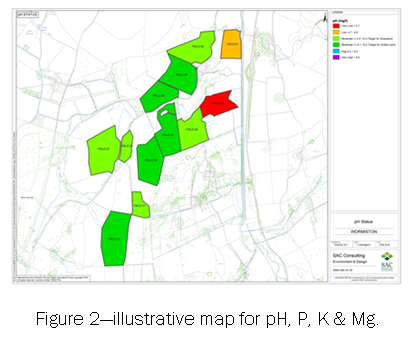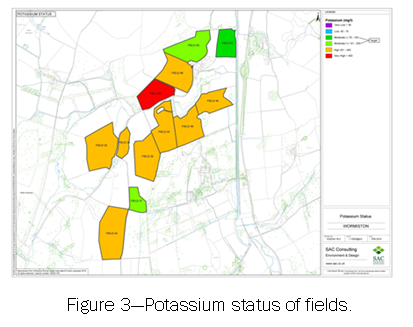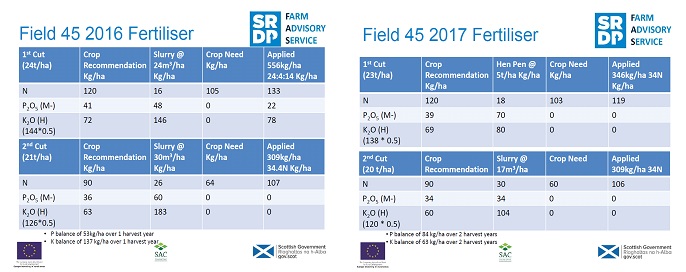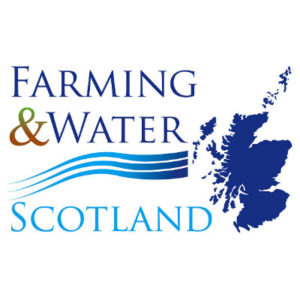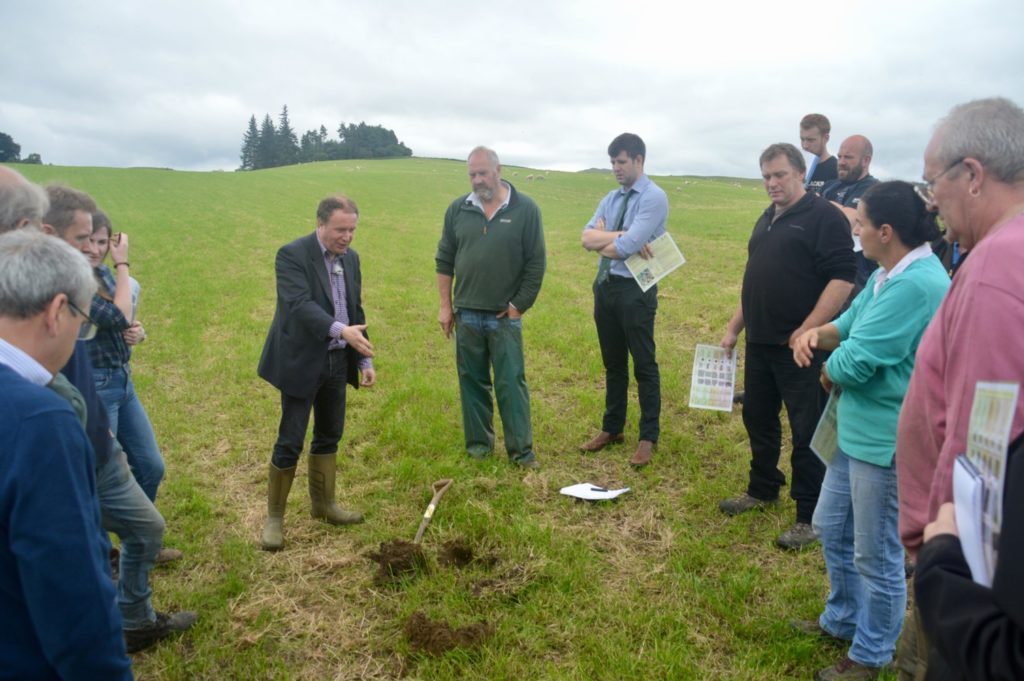Soil & Nutrient Network – Case Study: Wormiston Farm, Peebles-shire
1 April 2017An introduction to Wormiston
Wormiston, farmed by Robbie Brockie is an upland mixed beef and sheep farm covering 283 ha. The farm lies around 770ft above sea level with the business focusing on grass production for cattle and sheep, with some spring barley grown for cattle feed. The farm has 120 cows with all calves finished. The cattle are housed in the winter with half on bedded courts and half on cubicles. There are also around 1000 ewes on the farm. Wormiston has a vast range of soil types from alluvial soil running parallel to the Eddleston water, to Brown Forest soils to areas of gley. The soil series are Yarrow and Ettrick. Soil Capability ranges from 4.1 to 5.2.
Assess soil structure
SAC Consulting’s Bill Crooks dug two separate soil pits to show how to identify soil structure using the Visual Evaluation of Soil Structure (VESS) guide.
Bill described the process of selecting various areas of the field for evaluation, digging down to 40cm and removing a block of soil. The depth of each horizontal layer can be measured. 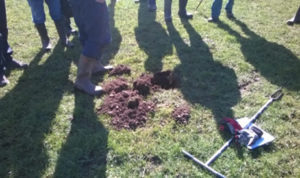 By looking at the soil block you can determine and score soil structure, based on 1 being friable with good soil structure to 5 being very compact suggesting additional action will be needed.
By looking at the soil block you can determine and score soil structure, based on 1 being friable with good soil structure to 5 being very compact suggesting additional action will be needed.
Good soil structure will be characterised by well formed porous blocks with rounded edges which can be easily broken between the fingers when moist. Vertical fissures will help to lead roots downwards. The soil will be more resistant to damage. A well structured soil will help soil nitrogen to be used more effectively and will also give good drainage and better uptake of minerals via the roots.
Poor soil structure will be much harder with sharper blocks which are more difficult to break apart. Horizontal fissures restrict root growth and development. Poor soil structure will be easier to damage. Options to rectify damage should be sought on soils scored 4 or 5.
The two soils evaluated at Wormiston were a spring barley and permanent grass field close to the steading.
The spring barley field scored a 1 – being friable with good root depth and aggregates that were easy to break up with one hand. The permanent grass field was rated 2 as being intact with much more root activity in the top two inches of soil which is typical of permanent pasture.
The quality of the soil structure in these fields was not as expected.
It is important to assess soil structure BEFORE taking any action to improve. Many problems can be easily worsened by subsoiling or taking action in unfavourable conditions.
Nutrient Budgeting – how can it benefit your farm?
SAC consulting sampled 12 fields for pH, P, K and Mg. Maps for pH, P, K and Mg were created to give a clear picture as to which fields required targeting. The pH for the fields sampled ranged from 5.3 to 6.2. (Figure 1). Other than two fields, all were within a suitable pH range for grassland production. The phosphate levels were mostly low to moderate which would require some additional application to rectify this. The potash levels were mostly moderate to high which is typical of a farm with a lot of FYM (Figure 2).
Using the soil testing information, a nutrient budget for the farm was created using PLANET Scotland. The recommendation was to alter fertiliser application to the spring barley. Currently 370kg/ha of 20:10:10 was applied over 28.57ha which resulted in a total cost of £2,625. An alternative to this was to make use of organic manure, applying FYM at 15t/ha to 25.02ha and 25t/ha to 3.55 ha.
To meet the spring barleys nitrogen requirements, the recommendation was to apply 180kg/ha of urea 46% to the 25.02ha and 105 kg/ha to the 3.55ha. On the 25.02ha no additional P & K was required and on the 3.55ha 96kg/ha was required. This gave a total inorganic fertiliser cost of £1,204 resulting in an estimated potential saving of £1,421.
For silage, currently 556kg/ha of 22:4:14 is applied on 51.83ha resulting in a total cost of £6,916. The recommendation was to apply slurry at 24m3 /ha to 43.91ha and at 20m3 on 14.52ha. For the nitrogen requirement for growing silage, urea 46% should be applied between 200-260kg/ha of the whole area and 22kg/ha of TSP on 29.39ha. Total estimated potential saving of inorganic fertiliser on silage would be £2,828.
Manure management at Wormiston Farm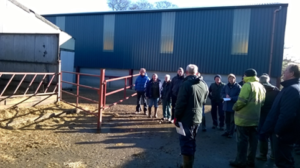
Dung from the straw bedded courts is typically mucked out every 2 months and middened in a field for spreading in the spring, either to stubble or to grassland.
Slurry is scraped from cubicles to a passage way then into an outside midden. Most of the farm is concreted, with dirty water also running into the midden.
It may be beneficial to explore ways of collecting dirty water to manage the dry matter content of the slurry, as a lot of rain water is collected in the slurry midden.
The farm has sufficient storage to collect slurry and spread when conditions allow.
Key Findings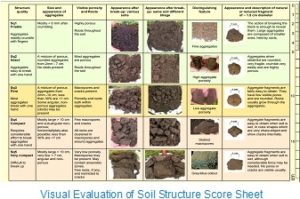
- Check soil structure for surface and sub soil compaction before takin any action to rectify problems.
- Sample you soils for pH, P, K & Mg routinely.
- Prepare a nutrient budget to make the best use of organic manures to reduce your fertiliser bill.
- Ensure sufficient storage to time organic manure applications to apply to growing crops.
- Slurry analysis showed huge variations in N, P &K depending on the source.
- Nutrient budgeting allowed for savings of over £5,000 on 12 fields increasing business efficiency.
- Using the VESS (Visual Evaluation of Soil Structure) guide allowed for an assessment of soil compaction.
There are a total of 12 SNN groups throughout Scotland and meetings are free to attend and open to all and you don’t have to have attended any of the previous meetings to go along. You can read meeting notes and case studies of previous SNN farms at Farming & Water Scotland‘s webpage.
Nutrient Budgeting 1-Year on
Following on from soil analysis taken in early 2016, the analysis results allowed for a saving to be made in fertiliser applications. Apart from two grazing fields, all fields were either on or above target for phosphate and all were on target with most above target for potash. Robbie counts the number of trailer loads of pit silage being removed from each field. From this an estimation was made on the weight of each trailer accounting for the dimensions of the trailer and the dry matter of the silage. Knowing yield allowed a calculation of crop offtake for phosphate and potash and using field level soil analysis an account was made for the soil status. The organic manures on the farm were also analysed giving an indication of the nutrient content.
Taking one field as an example, which analysed moderate plus for phosphate and high for potash, the decision was made to not apply any inorganic sources of phosphate or potash.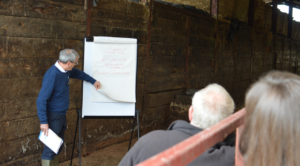
Before carrying out a nutrient budget, in 2016 there were two applications of slurry before each of the two cuts and 556kg/ha of 24:4:14 was applied. For second cut, 309kg/ha of 34.4N was applied.
By contrast, during 2017, hen pen was applied pre first cut and slurry pre second cut. No inorganic P & K was applied. The source of P & K was through organic manures and using the reserves built up in the soil. The only inorganic application was of bagged N where 346kg/h of 34.4N was applied pre first cut and 309kg/ha pre second cut.
In 2016 there was a surplus phosphate and potash balance of 53kg/ha and 137kg/ha respectively. In 2017 the phosphate surplus increased slightly to 84kg/ha and the potash was depleted to 63kg/ha. When nutrient budgeting it is important to make sure the crop offtake is being replaced, whether through managing high status soils, or through organic and inorganic applications. I
In 2016 the fertiliser cost was £1,948 on this field and in 2017 was £1,188 resulting in a saving of £760 or £75.40/ha.
In order to continue to make savings whilst maintaining soil nutrient levels, a nutrient budget should be calculated for following years.
Over the 12 fields (98.01ha) which the nutrient budget was calculated for a saving of £5,049 (£54.52/ha) was made. In 2016 the total fertiliser cost including spreading was £15,636 and in 2017 this was reduced to £10,587. This included a two cut silage system, spring barley and grazing.
Silage minerals and nutrients
An area of some 35.60 ha. was cut for silage in 2017 with an average yield calculated of 24.4t/ha. giving a total tonnage of 870 tonnes. A routine silage analysis was taken which also included an analysis of the phosphorous and potassium levels. The results showed a dry matter of 304.5g/kg, ME of 11.4 MJ/kgDM and crude protein of 123g/kgDM and the P&K levels found are shown in the following table. A discussion followed on how much phosphate and potash fertiliser was in the silage pit. The results demonstrate just how much potash is removed when making silage. This needs to be replaced which in this case has been supplied through slurry applications
Soil health and biodiversity
Grassland Research specialist Dr Paul Hargreaves reminded the group how to use the Visual Evaluation of Soil Structure (VESS) guide and discussed the condition of a silage sward and the most effective method of alleviating any compaction problems. Although of a reasonable texture the surface of the soil was compacted with a capped surface as it had little or no pores for any rainwater to drain through. This would present problems for any fertiliser or slurry to be incorporated into the soil for the growth of the grass sward. It was seen that this was the limiting layer in the soil profile and any management to improve the soil structure should focus on introducing drainage channels through the surface of the soil, this could be done by slitting or spiking.
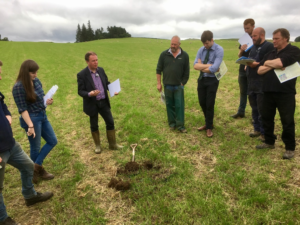
Dr Hargreaves explained that work on a dairy silage field that had been compacted either with cattle trampling or a heavy tractor, even if the sward still appeared to be intact, had resulted in a reduction in dry matter yield of 10 and 38% for the first silage cut in the spring after the compaction in the autumn. After three years of a regular compaction event in the autumn the dry matter yield for the tractor compaction had been reduced by 14% and the trampled areas by 11% compared to an un-compacted area. This accounted for approximately 3 t/ha of dry matter lost.
Soil compaction can also have a detrimental effect on soil biodiversity and this was discussed using bait lamina sticks as an example. Bait sticks were placed in a compacted and non compacted area of the field and the results showed where the soil structure was better there was significantly more biological activity for example earthworms.
It is important to assess areas of field where compaction is suspected to understand the severity and the appropriate management to rectify any problems. Compaction can impact on yields and the effectiveness of fertilisers and farm yard manures to increase dry matter yields of silage.
For dates of SNN events, find us on Facebook or follow us on Twitter @FASScot ![]()
![]()
Use these links to read event summaries from the second and third meetings of the Wormiston group.
Sign up to the FAS newsletter
Receive updates on news, events and publications from Scotland’s Farm Advisory Service

